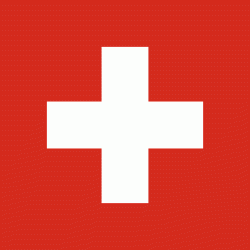Canton of Geneva (Canton de Genève)
The Canton of Geneva, officially the Republic and Canton of Geneva (République et canton de Genève; Rèpublica et canton de Geneva; Republik und Kanton Genf; Repubblica e Cantone di Ginevra; Republica e chantun Genevra), is one of the 26 cantons forming the Swiss Confederation. It is composed of forty-five municipalities and the seat of the government and parliament is in the City of Geneva.
Geneva is the French-speaking westernmost canton of Switzerland. It lies at the western end of Lake Geneva and on both sides of the Rhone, its main river. Within the country, the canton shares borders with Vaud to the east, the only adjacent canton. However, the borders of the canton are essentially international, with the French region of Auvergne-Rhône-Alpes. As is the case in several other Swiss cantons (Ticino, Neuchâtel, and Jura), Geneva is referred to as a republic within the Swiss Confederation.
One of the most populated cantons, Geneva is considered one of the most cosmopolitan regions of the country. As a center of the Calvinist Reformation, the city of Geneva has had a great influence on the canton, which essentially consists of the city and its suburbs. Notable institutions of international importance based in the canton are the University of Geneva, the United Nations, the International Committee of the Red Cross and CERN.
This article focuses on the history of the canton of Geneva, which begins in 1815, and some of the context leading to modern borders and events after that date. For more detail on the history of Geneva prior to that year, refer to the history of the city of Geneva. However, as a preliminary, it should be recalled that the Canton of Geneva, whose official name is the Republic and Canton of Geneva, succeeded to the Republic of Geneva.
Geneva is the French-speaking westernmost canton of Switzerland. It lies at the western end of Lake Geneva and on both sides of the Rhone, its main river. Within the country, the canton shares borders with Vaud to the east, the only adjacent canton. However, the borders of the canton are essentially international, with the French region of Auvergne-Rhône-Alpes. As is the case in several other Swiss cantons (Ticino, Neuchâtel, and Jura), Geneva is referred to as a republic within the Swiss Confederation.
One of the most populated cantons, Geneva is considered one of the most cosmopolitan regions of the country. As a center of the Calvinist Reformation, the city of Geneva has had a great influence on the canton, which essentially consists of the city and its suburbs. Notable institutions of international importance based in the canton are the University of Geneva, the United Nations, the International Committee of the Red Cross and CERN.
This article focuses on the history of the canton of Geneva, which begins in 1815, and some of the context leading to modern borders and events after that date. For more detail on the history of Geneva prior to that year, refer to the history of the city of Geneva. However, as a preliminary, it should be recalled that the Canton of Geneva, whose official name is the Republic and Canton of Geneva, succeeded to the Republic of Geneva.
Map - Canton of Geneva (Canton de Genève)
Map
Country - Switzerland
 |
 |
| Flag of Switzerland | |
Switzerland is geographically divided among the Swiss Plateau, the Alps and the Jura; the Alps occupy the greater part of the territory, whereas the Swiss population of approximately 8.7 million is concentrated mostly on the plateau, where the largest cities and economic centres are located, including Zürich, Geneva and Basel.
Currency / Language
| ISO | Currency | Symbol | Significant figures |
|---|---|---|---|
| CHF | Swiss franc | Fr | 2 |
| CHE | WIR Bank | 2 | |
| CHW | WIR Bank | 2 |
| ISO | Language |
|---|---|
| FR | French language |
| DE | German language |
| IT | Italian language |
| RM | Romansh language |















